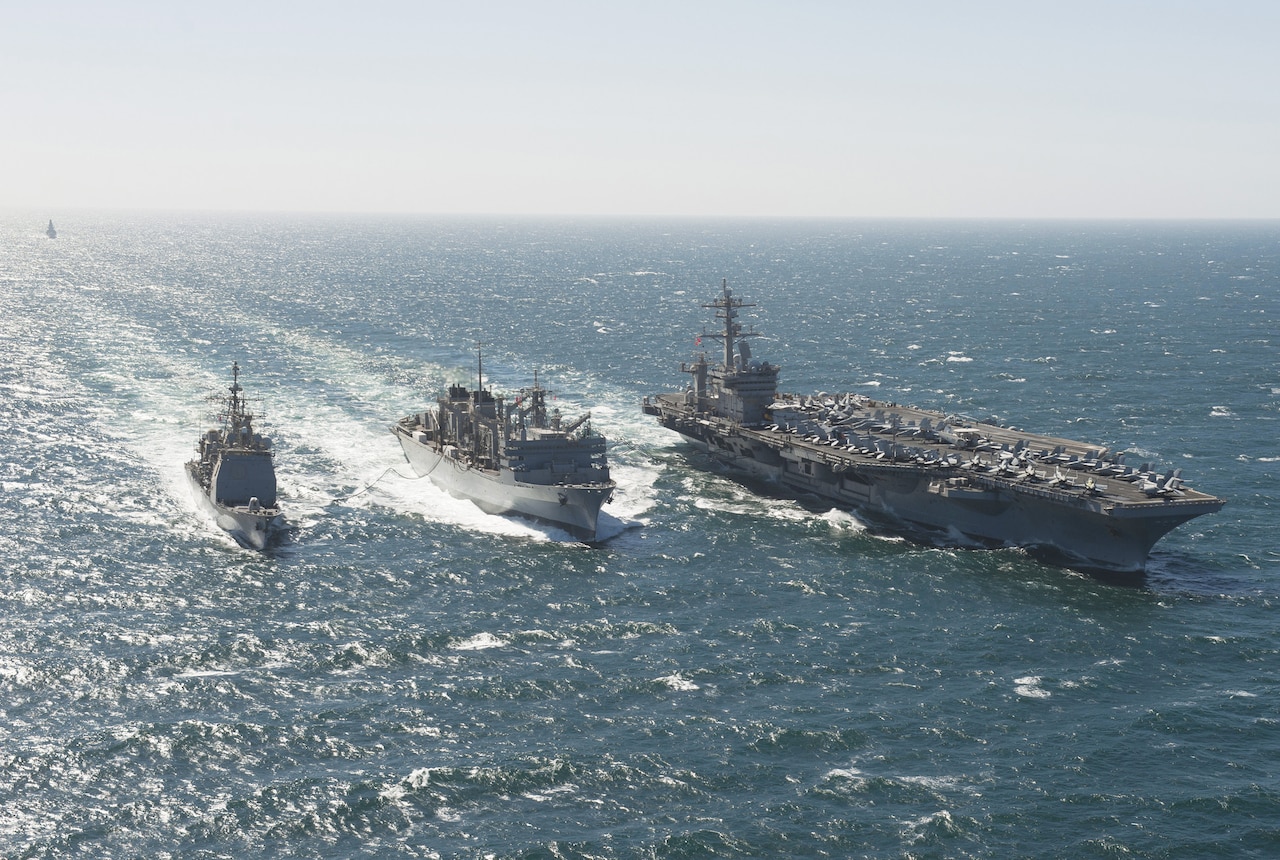You have accessed part of a historical collection on defense.gov. Some of the information contained within may be outdated and links may not function. Please contact the DOD Webmaster with any questions.
The Defense Department’s 2016 Operational Energy Strategy, the first issued since the inaugural report in 2011, shows how changes in the department and its operational environment demand a shift in approach to energy challenges, a senior defense leader said during a recent interview.
Amanda Simpson, deputy assistant secretary of defense for operational energy, is the official who will work with defense components to oversee the strategy’s implementation.
As defined in Section 2924 of Title 10 U.S. Code, operational energy is the energy needed for training, moving and sustaining military forces and weapon platforms for military operations.
“In other words, this is the fuel used in ships, jets, combat vehicles, and contingency bases — it powers our global operations,” she said.
“Everyone thinks that less expensive fuels means there is no need to worry about how much and how we use energy in the military,” she added.
“If fuel was free, we’d still have to pay an operational price for our energy needs, so it’s something we do need to worry about, or at least consider.”
Simpson added, “The cost of energy far exceeds the price of fuel.”
Strategy Shift
According to the report, the 2016 strategy shifts the department’s focus toward a refined set of objectives, including the following:
— Increasing future warfighting capability by including energy throughout future force development;
— Identifying and reducing logistic and operational risks from operational energy vulnerabilities; and
— Enhancing the force’s mission effectiveness with updated equipment and improvements in training, exercises and operations.
“Virtually every platform that comes out … whether it’s the new truck, the new tank, the new ship, the new plane, the new soldier gear … has more capability hands-down, but also costs us energy in operations,” Simpson said.
“So, how do we make sure that we’re able to support this equipment in the field? We never want to say don’t use energy or restrict the amount of fuel that’s available to the troops,” she added.
“Sometimes, this means adapting the equipment, but, often, changing our tactics, techniques and procedures may be just as important as the new gadget.”
Operational Changes

Simpson said several changes contributed to the shift in energy approaches.
These include DoD’s rebalance to the Asia-Pacific region and the vast distances involved in operating there, continuing support of global operations that include revisionist states and violent extremists groups, and anti-access/area-denial weapons like mines, ballistic and cruise missiles, advanced air defenses and improvised bombs of all kinds, according to the strategy.
Simpson said she groups the new approach into three categories — “what are the things that we can do now, what are the things we should be planning for tomorrow, and what are the things we must do for the future?”
Future, Tomorrow, Today
For the future, the department must consider energy supportability in the field of new weapon systems.
“It’s not just a question of planning for it, we need to consider it early on in the design process, early on in requirements,” she said, noting that there’s now a mandatory energy key performance parameter for every DoD acquisition program.
“With the right energy supportability analyses, you can come up with a parameter that describes the needed performance of your system in a scenario that assumes constrained logistics capacity and lethal adversaries, she said, adding, “These KPPs may not be exciting — it could be payload ton-miles per gallon, for instance — but they reflect rigorous supportability analyses that directly link operational energy to warfighting capability.”
For the “tomorrow” category, she said, “we have operational plans, we have forces strategically located, we have forces to be deployed, and we need to look at those for energy implications — how do we make sure that we’re ready, how do we minimize the risk they face due to our energy needs?”
For the “today” category, Simpson said, the department is focused on the contingency bases and air, land, and sea systems already operational in the field.
“We can’t immediately issue you a new tank, we’re not going to change the engine today in that fighter aircraft, but we can field mid-life upgrades, improve our TTPs, or provide commanders with better information on their energy use in the field,” she explained.
Reducing Vulnerability
As a whole, the department is looking at a range of basic strategies to reduce vulnerability created by its need for energy, Simpson said, including improved engines, better ways to track fuel usage, and even putting operational energy risks and opportunities into wargaming.
“Putting [such] analytical capability into wargaming and, to some extent, our exercises, is a huge force multiplier with regard to understanding our liabilities because of our dependence on fuel and the risks associated with it,” she said.
Then, she noted, “we can come up with strategies for mitigating those risks, long before the actually occur in the field.”






